
- Home
- Age
- 1800-1849 (10)
- 1850-1899 (719)
- 1868 - 1912 (5)
- 1868 To 1912 (4)
- 1868-1912 (29)
- 1870-1930 (7)
- 1880-1910 (4)
- 1880-1912 (7)
- 1890-1910 (6)
- 19th Century (20)
- 20th Century (5)
- Ca 1900 (6)
- Early 20th Century (44)
- Late 19th Century (16)
- Meiji (14)
- Meiji Period (7)
- Post-1940 (275)
- Unknown (80)
- 1900 (9)
- 1900-1940 (543)
- ... (1740)
- Brand
- Maker
- Ando (39)
- Ando Cloisonne (19)
- Ando Jubei (25)
- Ando Jubei Nagoya (7)
- Ando Workshop (21)
- Cloisonne (21)
- Gonda Hirosuke (6)
- Hiroaki Oota (7)
- Japan (30)
- Japanese (10)
- Japanese Craftsman (110)
- Kumeno Teitaro (9)
- Meiji (5)
- Sato (26)
- Shuzo (9)
- Tamura (6)
- Unknown (178)
- Unknown Artist (15)
- Unsigned (13)
- Yamamoto (6)
- ... (2988)
- Material
- Product
- Type
Early Japanese Cloisonne Enamel Vase Signed & Pictured in Book (PIB)
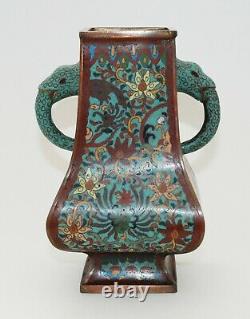
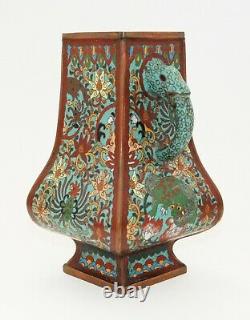
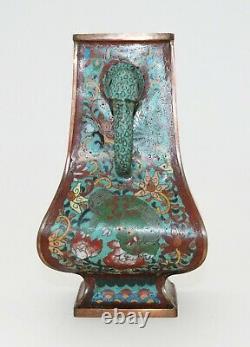
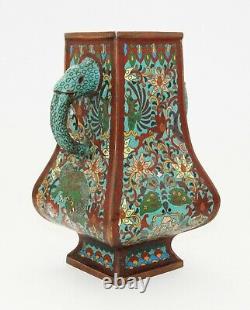
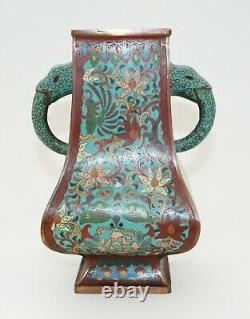
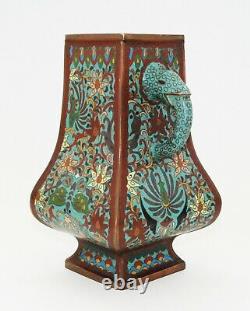

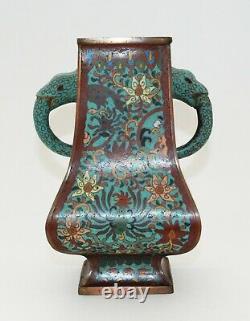
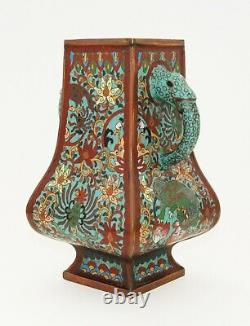
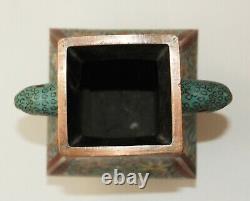
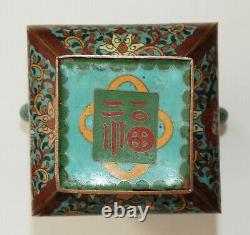
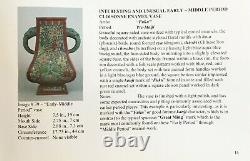


Pleased to offer an early Japanese cloisonne enamel vase that dates around 1860 -1880. This is a very detailed four sided vase that is decorated in primarily in formal floral head designs.
In one panel, there is a phoenix (ho-o), in another panel there is a shi-shi (Chinese lion dog) worked in various shades of subtle colored enamel. This complex vase has been lovingly taken care of over the years and has the classical muted colorsof the early pieces. These marked early examples are getting much harder to find, especially when marked by the artist or workshop.The artist of Fuku is formed in wire on the base. The highlights of this early vase are the two animal form handles that are rarely seen on such early examples. Overall, this early example is in very good antique condition without any major condition issues or restoration. There are very small area of enamel loss on the extreme edges of the two handles (please refer to images) but fortunately, they are primarily cosmetic in nature.
Collectors will readily understand that these early pieces have areas of pits and concavities in the enamels. There are some areas of pitting near the edges of the vase, but these areas are very common in these early examples. Specialists generally agree that less than 7.0% of Japanese enamels are signed or marked by the artist workshops. These early works are fascinating as they ushered in the explosive development of both technological innovation and artistic expression.
This exact vase is pictured on page 11 in Chapter 2, Early - Middle Period Japanese CloisonneEnamel, in Gary Yoshinos Japanese Cloisonne Enamels - A Private Collectors Notes and Reference Guide. The height of this early vase is approximately 7.5 inches. The width of this early vase is approximately 5.25 inches. Overall, an attractive work in excellent antique condition that maintains a nice balance of the subtle understated enamel colors and the dynamic changes in composition and design. Due to the fragile nature of cloisonné enamels, this item will be double boxed and packed with tremendous care.
The item "Early Japanese Cloisonne Enamel Vase Signed & Pictured in Book (PIB)" is in sale since Sunday, December 27, 2020. This item is in the category "Antiques\Asian Antiques\Japan\Vases".The seller is "gyassociates" and is located in Carlsbad, California. This item can be shipped to United States.
- Primary Material: Cloisonne
- Region of Origin: Japan
- Age: 1850-1899
- Original/Reproduction: Antique Original
- Maker: Signed Fuku
- Color: Early Period Vase Worked in Various Shades of Enamel

